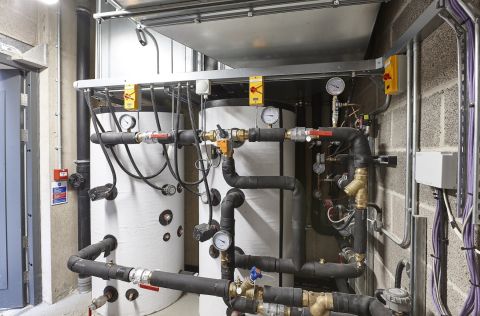Buying guide
Portable Heaters
Things to consider when buying a portable heater
Portable heaters are great for keeping the chill off a room in the warmer seasons when it's not quite cold enough to put on your heating, or are ideal to use in a pinch if your heating starts playing up in the depths of winter. But considering what type of heater to purchase can quickly become overwhelming. This handy guide will help eliminate the jargon and help you decide what heater is best for you and your family.
Where are you going to use it?
Where you are planning on using your portable heater will determine which type to purchase. For example, if you intend to use it in a garage or workshop, you will require a more robust product that has a dust filters like those incorporated in the RUG3TS. But for small bedrooms, a compact heater like the Eco Chico is ideal. If you’re after a heater for general use in living areas, you have a wide choice of all around heaters: fan and ceramic, convectors and radiators.
What type of heat do you want?
There are three main types of heat produced from portable heaters: fanned, radiant and convected.
Fan heaters draw air over a heating element quickly by using a fan to then propel the warmed air out. Radiant heaters create rays of energy that convert to heat once it hits and is absorbed by the body or object, similar to the warmth you feel from the sun, whereas convector heaters heat up the air around you and push it out into the room. The optimum heat type for human comfort is actually a blend of 80% convected and 20% radiant heat, so look for a heater that features a mixture of both technologies like our oil-free eco portable radiators.

Boris Johnson’s Ten Point Plan: Clean and green, but is it enough to support the decarbonisation of heat?
Boris Johnson has launched his Ten Point Plan for a green industrial revolution. Ahead of COP26, this aims to show how committed Government is in making the UK a world leader in sustainability. But will this plan finally offer the infrastructure needed for the decarbonisation of heat?

How do we maximise the potential of heat pump technology to help us achieve net-carbon objectives?
The roadmap to achieve the UK’s 2050 net-zero carbon target is still relatively unclear. This creates uncertainty about the implementation of low carbon solutions in the industry. The lack of direction in turn affects the ability to plan for future developments. Difficult specification choices, doubts over futureproofing strategies, and lack of preparedness for regulatory changes, are just some of the factors affecting heat pump specification in new developments and existing buildings in both residential and commercial sectors.

Which technologies are the most viable to deliver the decarbonisation of heating?
To deliver the decarbonisation of heating, we should deploy a wide range of technologies that can help to eliminate the use of high carbon fossil fuels. Electric solutions, especially those that utilise renewable energy, offer a viable route to ensuring our homes are heated in a low carbon way. To successfully transfer to electrical infrastructures and make the necessary adjustments that bring us closer to achieving the UK’s 2050 net zero target, the industry will need a clear plan with achievable interim targets.











